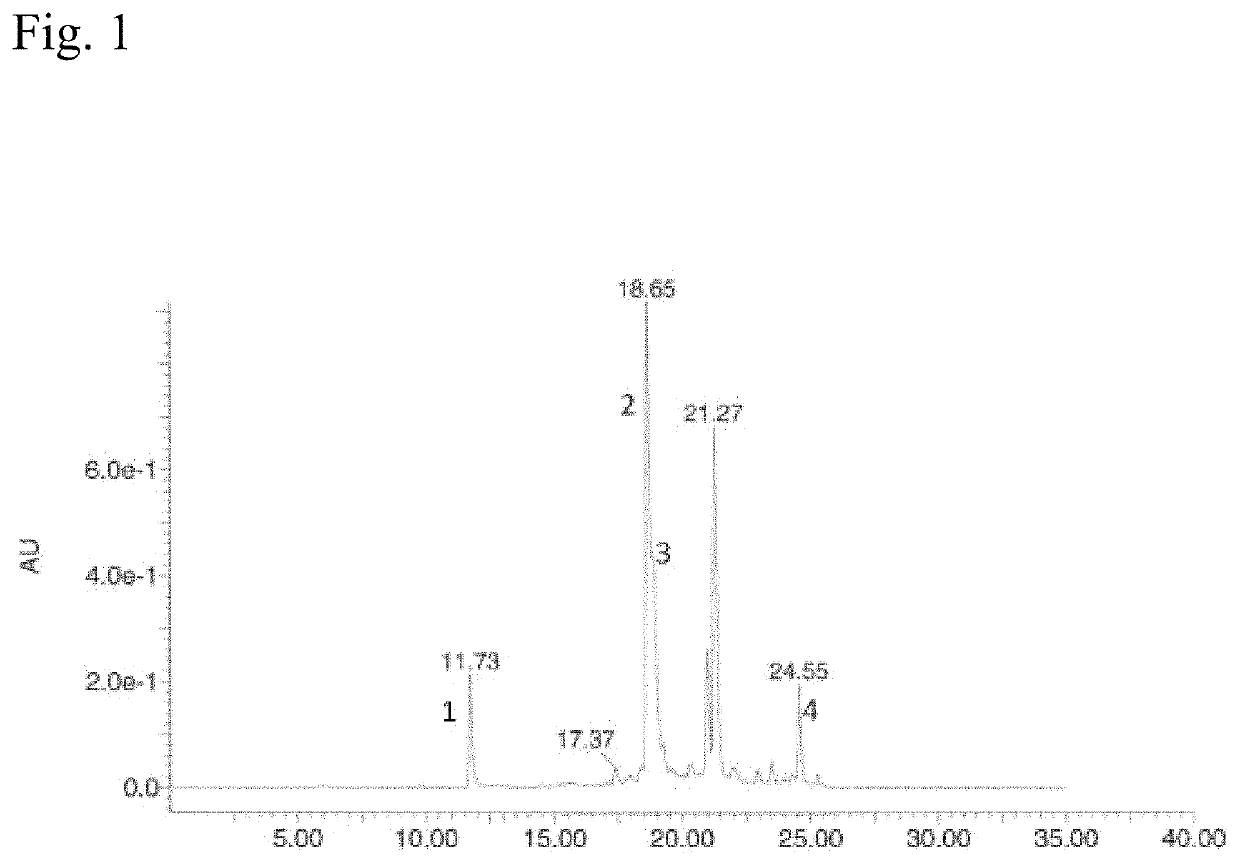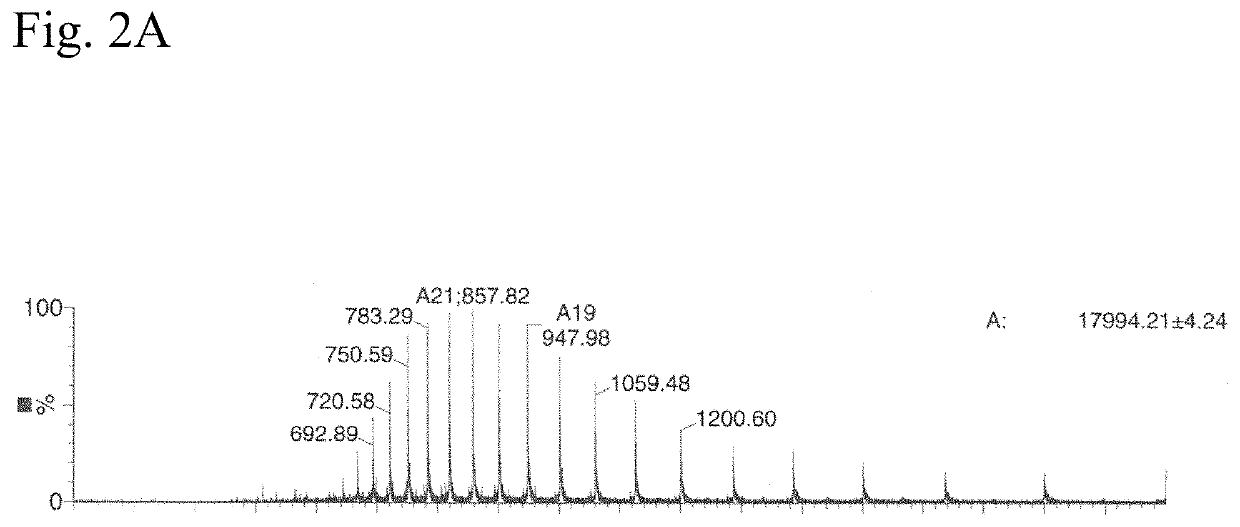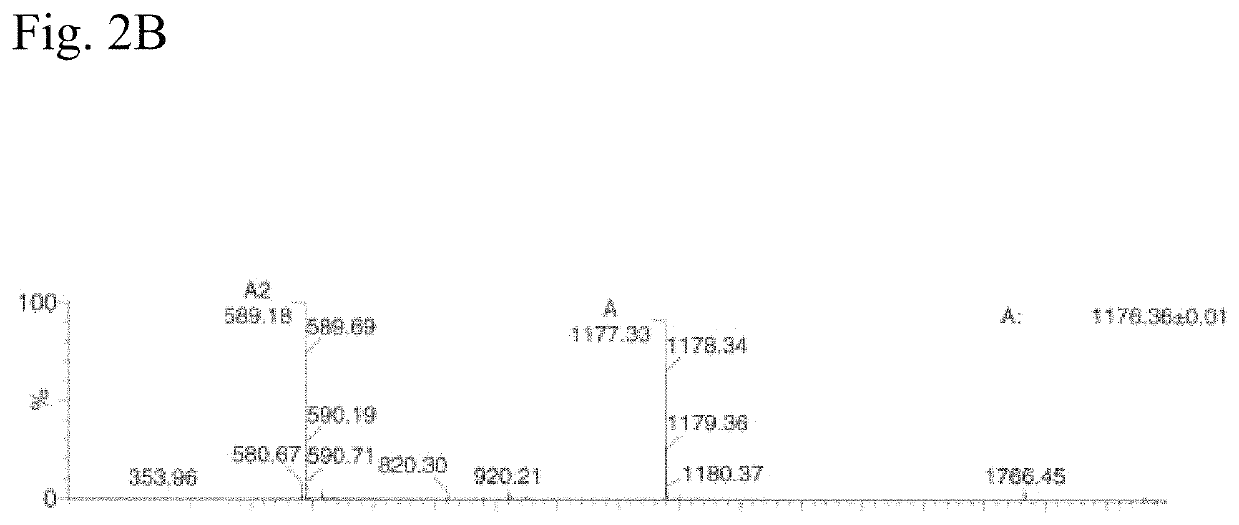Transamidation reaction in deep eutectic solvents
a technology of deep eutectic solvents and transamidation reaction, which is applied in the direction of biochemistry apparatus and processes, enzymes, peptidases, etc., can solve the problems of enzyme intermediate formation, difficult production, environmental damage, etc., and achieve the effect of suppressing the hydrolysis side reaction
- Summary
- Abstract
- Description
- Claims
- Application Information
AI Technical Summary
Benefits of technology
Problems solved by technology
Method used
Image
Examples
example 1
Generation of an Expression Plasmid for Sortase A
Staphylococcus aureus Derived Sortase A
[0244]The sortase gene encodes an N-terminally truncated Staphylococcus aureus sortase A (60-206) molecule (amino acid sequence of SEQ ID NO: 05).
[0245]The expression plasmid for the expression of sortase in E. coli cells comprised besides the sortase expression cassette an origin of replication from the vector pUC18, which allows replication of this plasmid in E. coli, and the URA3 gene as selectable marker, and the Lad gene to allow induction of transcription using IPTG.
[0246]The transcription unit of the sortase comprised the following functional elements:[0247]a T5 promoter,[0248]a purification tag,[0249]an N-terminally truncated S. aureus sortase A encoding nucleic acid, and[0250]the To and fd termination sequences.
[0251]The expression plasmid for the transient expression of sortase in HEK293 cells comprised besides the sortase expression cassette an origin of replication from the vector pUC...
example 2
Transient Expression and Analytical Characterization
E. Coli:
[0297]The recombinant production of Sortase was performed by growing E. coli cells transformed with the respective Sortase expression plasmids to an OD578 of approx. 0.9 at 37° C. (pre-culture). At this OD578 of approx. 0.9 protein expression was induced by adding 2 mM IPTG and growing the cells for an additional 24 hours at 28° C. Thereafter, cells were harvested by centrifugation and lysed via high pressure using a homogenizer. Cell lysates were centrifuged to remove cell debris and subsequently the cell lysates were stored at reduced temperature (e.g. −80° C.) until purification. Soluble Sortase was purified using Ni-NTA chromatography followed by size exclusion chromatography. For depletion of endotoxins an anion exchange chromatography was performed in flow through mode. The protein concentration of sortase preparations was determined by measuring the optical density (OD) at 280 nm, using the molar extinction coeffici...
example 3
Sortase Mediated Transamidation in Deep Eutectic Solvents
[0302]DES-1 in this example is choline chloride mixed with glycerol at a molar ratio of 1:2.
[0303]As substrates the following components were used:[0304]sortase-motif containing compound: LCR640-ULPETGGRRC (SEQ ID NO: 175)[0305]nucleophile: GGGWW-BHQ2 (SEQ ID NO: 46)
[0306]The two substrates which have a low solubility in water but good in DES were incubated with two different sortases and the activity determined.[0307]Sortase 1: soluble Staphylococcus aureus Sortase A (SEQ ID NO: 05)[0308]Sortase 2: soluble Listeria monocytogenes Sortase A (SEQ ID NO: 38)
[0309]The educts were dissolved in DES-1 (glycerol and choline chloride 2:1) to a final concentration of 0.5 mM. 1 mM Sortase 1 was stored in 50 mM Tris*HCl pH 7.5, 150 mM NaCl and 10 mM CaCl. This two solutions where mixed 19:1 (v / v) and incubated for 18 hours at 37° C.
[0310]Reaction mixture (10 μl) was injected on a Vydac C18 column of an LC-Ms system and separated with a 30...
PUM
| Property | Measurement | Unit |
|---|---|---|
| melting points | aaaaa | aaaaa |
| temperature | aaaaa | aaaaa |
| temperature | aaaaa | aaaaa |
Abstract
Description
Claims
Application Information
 Login to View More
Login to View More - R&D
- Intellectual Property
- Life Sciences
- Materials
- Tech Scout
- Unparalleled Data Quality
- Higher Quality Content
- 60% Fewer Hallucinations
Browse by: Latest US Patents, China's latest patents, Technical Efficacy Thesaurus, Application Domain, Technology Topic, Popular Technical Reports.
© 2025 PatSnap. All rights reserved.Legal|Privacy policy|Modern Slavery Act Transparency Statement|Sitemap|About US| Contact US: help@patsnap.com



